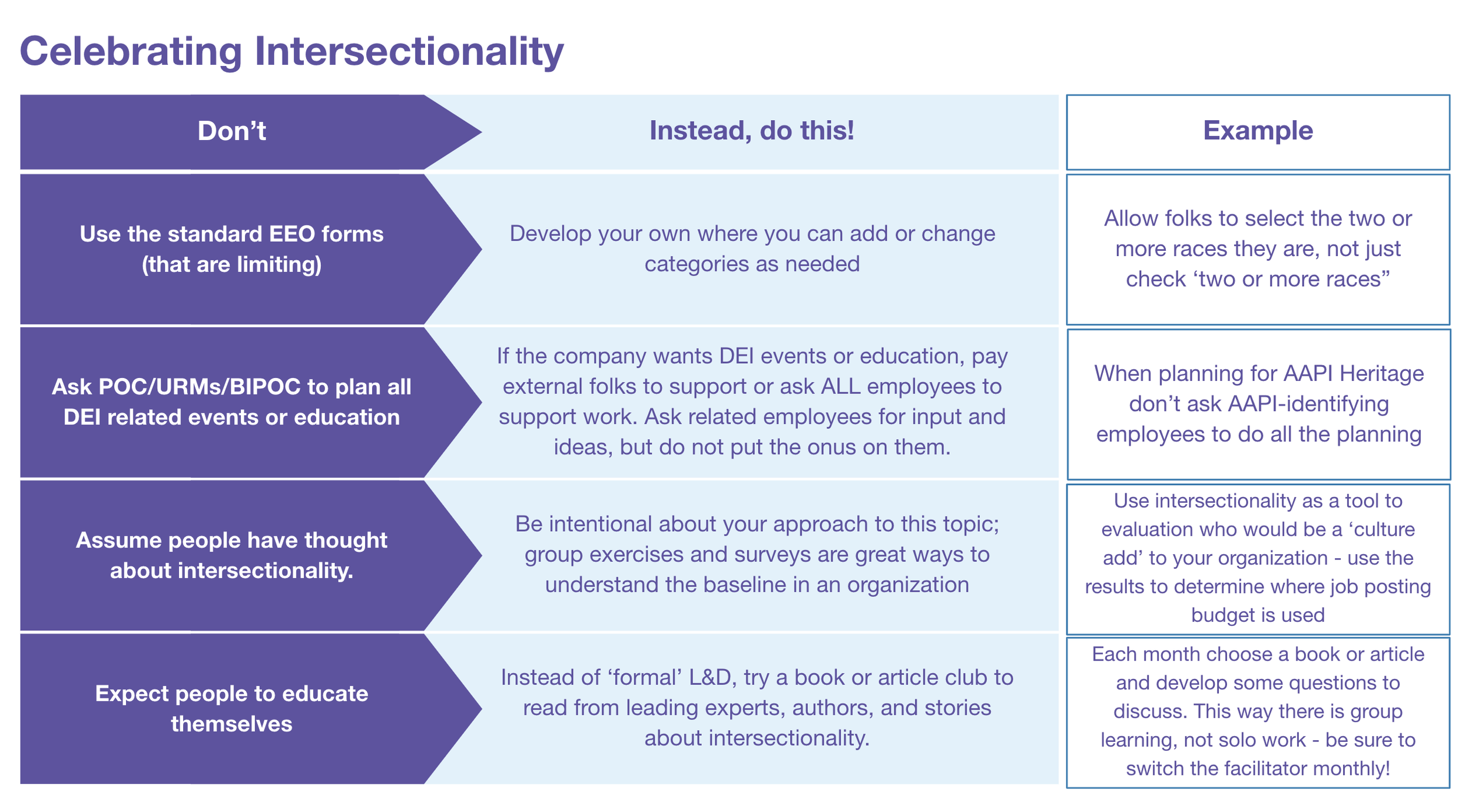What is Intersectionality?
Social justice initiatives involving intersectionality have existed since the inception of the United States. However, it wasn’t until recent years that the terminology became more widespread and commonly used. Where did this newfound popularity for intersectionality-centered conversation in social justice work come about, and what exactly encompasses the meaning of intersectionality?
In the latest installment of Meetup Live’s Dismantling Social Injustice Series, topic experts and advisors from The Rise Journey spoke to the complexities behind the term ‘intersectionality’ and shared their experiences. The event featured:
Paul Tucker, Racial Equity Advisor
Aurora Higgs, Social Justice & Gender Advisor
The Origins, Meanings, and Uses of Intersectionality dives beneath the surface to offer a deeper understanding of the term and why it is a trending topic in today’s social justice conversation. Below are key points and action-oriented takeaways from the discussion:
Intersectionality. What is it?
“Intersectionality is the idea that none of us come to the table as a monolith, meaning everything is cut and dry, and you're a single story,” said Higgs. “When we talk about identities, whether it be your sexual orientation, your race, or your citizenship status, all of these are different identities, and none of us are just the one.”
By definition, intersectionality is, “the complex, cumulative way in which the effects of multiple forms of discrimination (such as racism, sexism, and classism) combine, overlap, or intersect especially in the experiences of marginalized individuals or groups.”
Why is learning about intersectionality important?
Intersectionality allows for us to address, break down, and understand complex issues like racism and sexism, and how it impacts groups and individuals on multiple levels.
“We're living in a house that's condemned, and it's falling to pieces. And I know we don't want to face that, but unfortunately, we were born into this house. There's nothing we can do about how the house came to us, but we can choose to fix it. And yes, it will take work and it's not fair that you have to do this work, but you have to choose if you want to live in that house,” said Tucker.
He references an analogy used by Isabelle Wilkerson to demonstrate the comparison of the state of our country and culture to that of an old house in need of repair, and how the process of reflecting and repairing is vital to improving its residents’ conditions.
Chart explaining intersectionality in the workplace with examples.
Why is there pushback around the topic of intersectionality?
The topic of intersectionality has spurred controversy and is sometimes weighed down by negative sentiment very often tied to the call for accountability and self-reflection. There is a hesitance to unravel a topic that makes one acknowledge that there are privileges and determinants that come with differing identities, and that these disparities have existed, currently exist, and are complicated.
“People are really concerned about children being taught a history that implicates them. And the reality is that we are all implicated,” said Tucker. “It is important to acknowledge the actively racist realities of our history, rather than a romanticized picture denying its existence. In inspecting power dynamics, privilege, and oppression in a really explicit way, intersectionality really allows us to position ourselves within all of the different hierarchies of human value that we have created.”
One way to navigate this and come to an understanding is by discussing the topic openly and with an open-minded approach. Higgs references “Oppression Olympics” as the erroneous belief that one does not have to acknowledge forms of oppression and diversity outside of their own experiences and knowledge, resulting in a futile “Who had it worst?” mindset.
Why is it important to prevent intersectionality from becoming a buzzword?
In examining the prison system’s impact on different demographics of people in the U.S., lawyer Kimberlé Crenshaw discovered that women of color face multiplied oppression due to their identity as both black and female; as a result, she popularized the term “intersectionality” in relation to her field of research. However, it is important to keep in mind that initiatives in the framework of intersectionality existed before the term became popular and was even exemplified by strong female figures like Maria Stewart and Sojourner Truth - this reiterates the sentiment that only by continuing to put in the work will true progress be made.
How intersectionality applies today: What can we do?
“Genuine relationships and dialogue with people across difference are the keys in which we move and drive these things forward,” said Tucker.
It can be challenging to navigate pandemic and post-pandemic times. But beyond institutional structures, working on internal behavioral aspects of an organization is just as important.
Ways to improve workplace culture within the framework of intersectionality
Invest in consultants in order to gain a better understanding of potential gaps in equity
Conduct a prescriptive analysis customized to each individual company
Listen to valuable feedback and insight from people at various levels of an organizational hierarchy
Prioritize building inclusion and diversity from the ground up
Intersectionality allows us to reflect on our willingness as both an individual and a societal whole to navigate, understand, and acknowledge how hierarchical structures in individual to institutional powers come into play. One certainty is that if we do not want to continue living in a dilapidated house - we need to step up and actively take steps to fix it.
Additional resources:
Paul’s recommendations:
“Age, race, class and sex women redefining difference” by Audre Lorde
Why it’s Important: Audre Lorde shares her experience from a personal intersectional lens as a middle-aged, black lesbian feminist with children, and what racism and other -isms look like from her viewpoint.
Aurora’s recommendations:
Why It’s Important: The online library hosts over 3,000 free resources on achieving racial equity.
Why It’s Important: The Virginia-based podcast born out of uprisings for Black Liberation serves as a vital platform to feature voices and narratives in the struggle for freedom and justice.
Why it’s Important: Bias often infiltrates state agencies and social welfare initiatives; Mutual Aid provides direct donations to support individuals in need.
Access the full recording of ‘The Origins, Meanings, and Uses of Intersectionality’ here.




